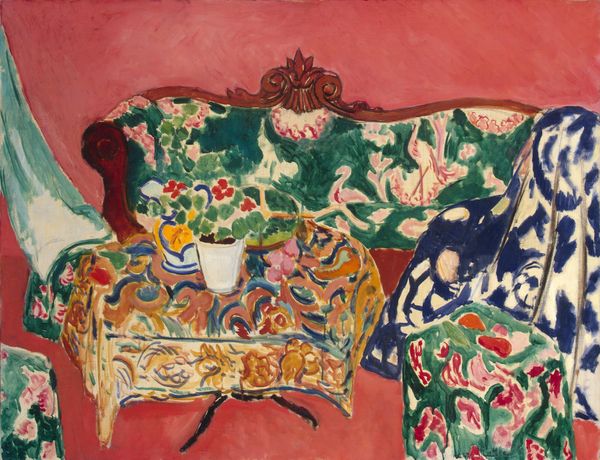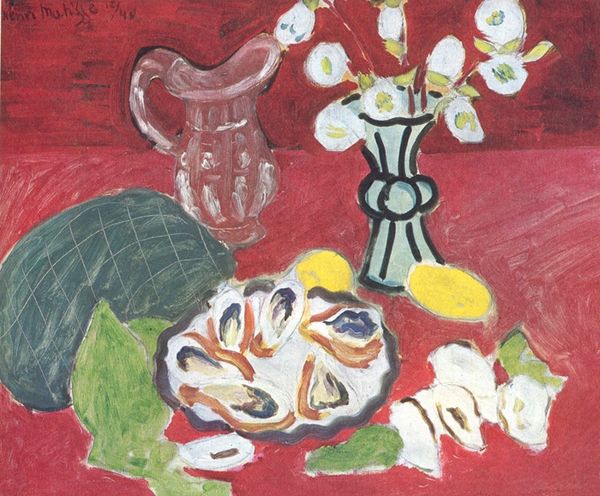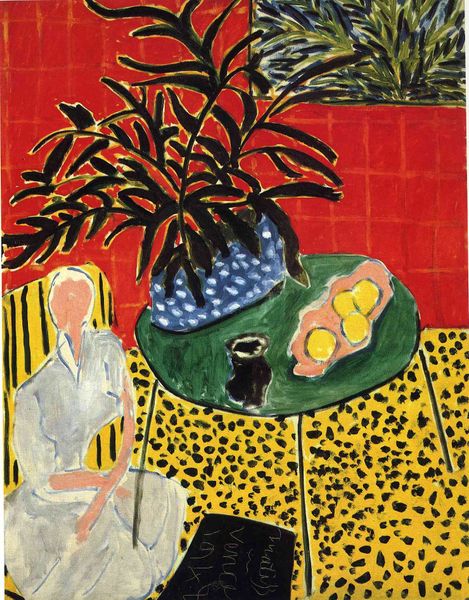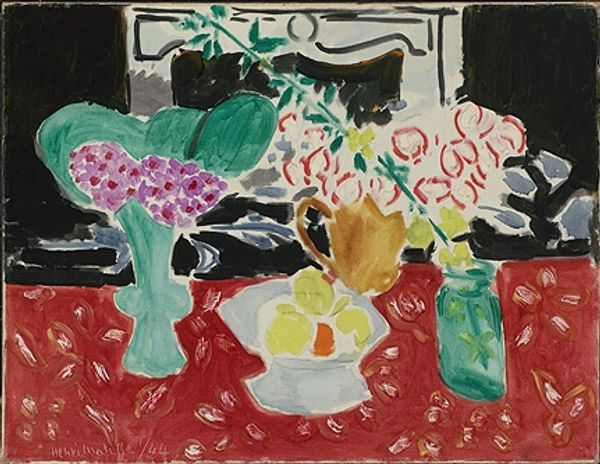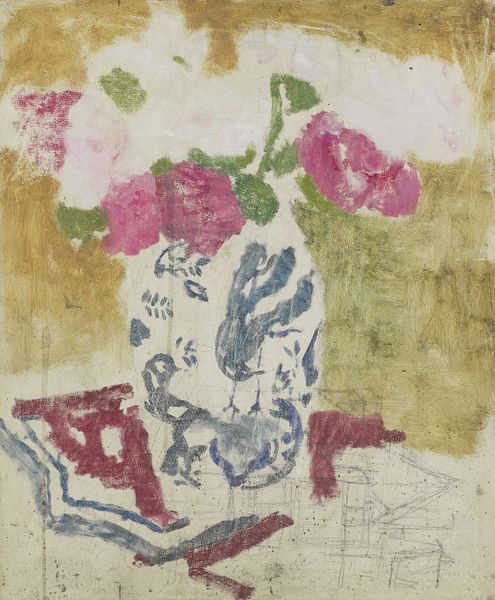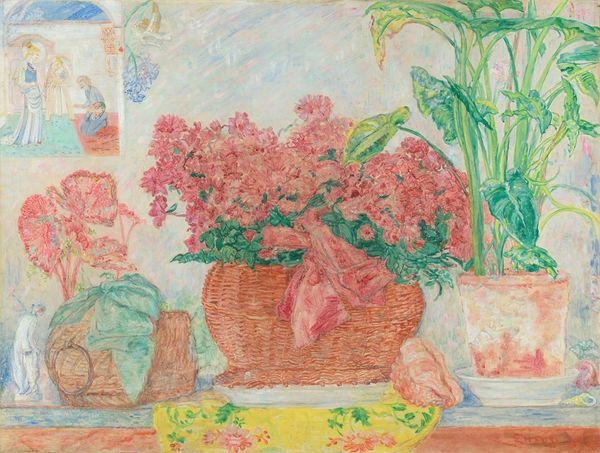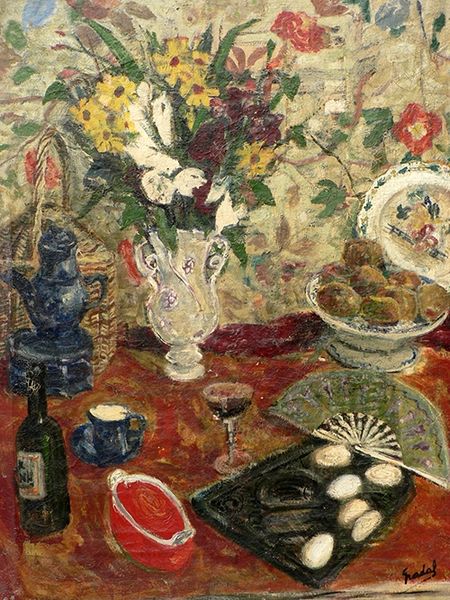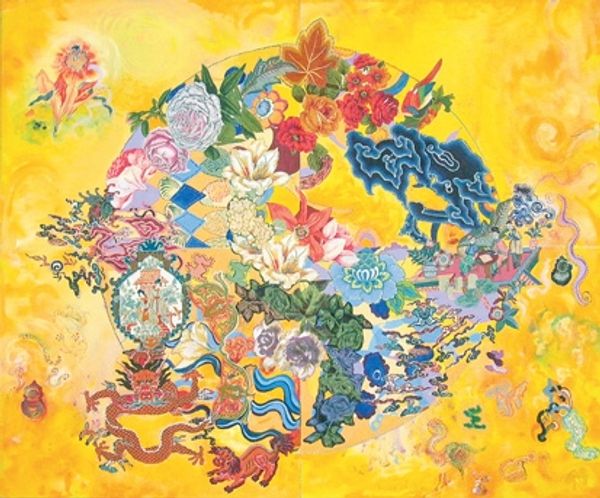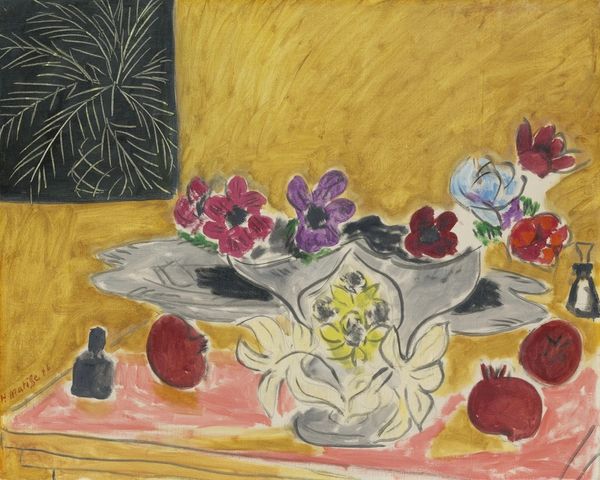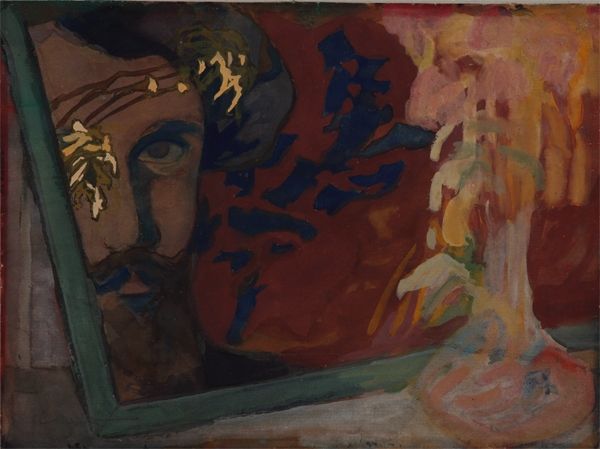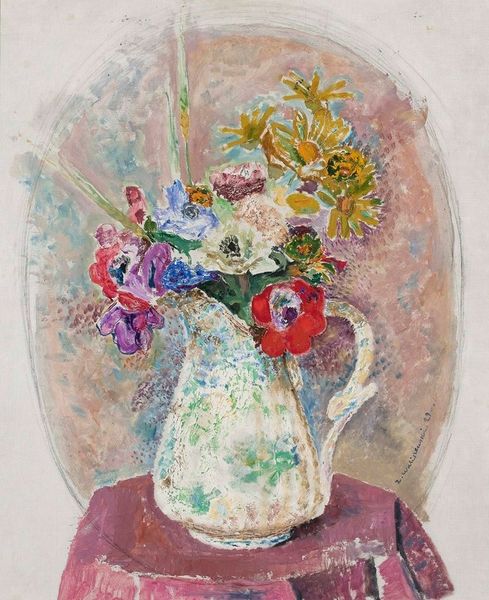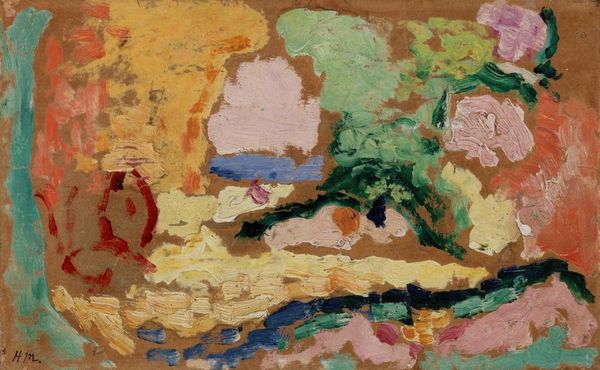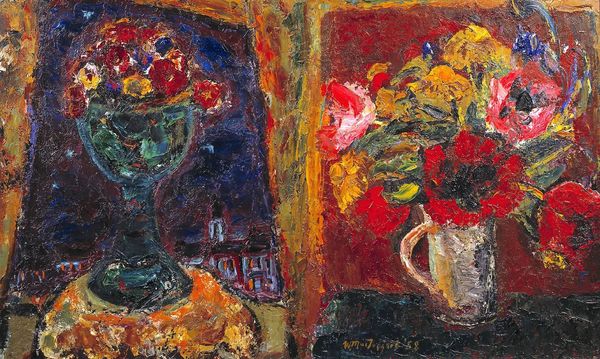
Copyright: Public domain US
Henri Matisse created this artwork, "Spanish Still Life," using paint on canvas. Matisse's approach to still life, and to painting in general, was profoundly shaped by the cultural milieu of early 20th-century Europe, where artists sought new modes of expression beyond traditional academic constraints. The artwork itself creates meaning through its vibrant use of color, flattened perspective, and the intricate patterns of the textiles. These visual codes reference the exoticism associated with Spain, reflecting a broader European fascination with non-Western cultures. Matisse's artistic development was influenced by institutions like the Académie Julian, where he challenged conventional norms, aligning himself with the progressive artistic movements of his time. This still life doesn't directly critique the institutions of art, but it does represent a departure from traditional artistic representation. To understand this painting better, we can research Matisse’s artistic formation, the cultural context of early 20th-century art, and the European fascination with Spanish themes. The meaning of "Spanish Still Life" lies not only in its visual elements but also in the complex social and institutional forces that shaped its creation.
Comments
No comments
Be the first to comment and join the conversation on the ultimate creative platform.
